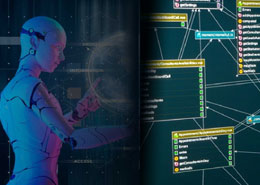by Francesco Marcolini | AxioWorks CEO, Software Architect and Developer///
Artificial Intelligence (AI) has rapidly emerged as a revolutionary technology that fundamentally alters the nature of human-machine interactions. By its design, AI is exceptionally proficient in directly engaging with humans, understanding their instructions, and providing contextual responses. However, it is important to note that the nature of these interactions inherently carries a certain degree of inaccuracy.
When AI interacts with humans, it interprets inputs that can be ambiguous, imprecise, or entirely incorrect. It may misconstrue a subtle inflection, overlook a critical nuance, or even misunderstand an instruction due to an idiosyncratic turn of phrase. Despite these challenges, AI continues to learn, evolve, and improve its ability to comprehend and converse in the human language, but it doesn’t erase the inherent fuzziness that comes with human language and interactions.
On the other hand, the engine that drives business processes and decision-making in organizations is well-structured and accurate data. Businesses can ill-afford inaccuracies in their transactions, as even the slightest discrepancy can lead to misinterpretations, erroneous decisions, and potential losses. Businesses rely on the collection and analysis of precise data – whether it be from sales, customer behaviour, market trends, or internal performance metrics – to make informed decisions and strategic plans.
This dichotomy in the nature of AI and data handling processes could be metaphorically likened to a top-down and bottom-up approach. AI operates in a top-down manner, directly interacting with the ambiguities of human language and thought processes, and trying to make sense of it all. Data, on the other hand, operates from a bottom-up perspective, starting with individual, precise data points that are aggregated, analysed, and used to paint an accurate picture of the broader situation.
So, where do these two worlds – AI, with its capacity for human-like interaction, and data, with its requirement for precision – meet?
Both these worlds converge at the point of ‘Informed Decision Making’. AI, with its learning and adaptability, can mine insights from unstructured data, translate them into a format more suited for analysis, and make decisions in a real-time context. Data, with its precision, offers an accurate representation of historical trends and patterns which guide strategic decision-making.
When combined, the top-down ‘AI lens’ and the bottom-up ‘data lens’ create a complete, panoramic view that enables organizations to leverage the power of AI while staying grounded in the realities reflected by their data. This symbiosis between AI and data is where the future of business intelligence and decision-making lies.
Indeed, the real question isn’t where AI and data meet but rather how businesses can better integrate the two to drive operational efficiency, improve customer experiences, and shape strategic vision.
